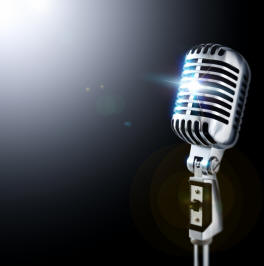To explain what Pod-casting is, I like to turn to the Ninja.
Oddly enough, the Ninja is pretty accurate, even if some of his metaphors are a bit odd. So maybe I can clear it up.
What it is
Pod-casting is a term that is used to combine iPods and broadcasting. It was coined by former MTV VJ Adam Curry. In its simplest form Pod-casting is when you create an audio program on your computer, save it as an MP3 file, and then post it to the Internet. Once the file is on the Internet somebody can listen to it online or download it to their computer and load it on to any MP3 player. So despite the term Pod-cast, you donít have to have an iPod to listen to Pod-casts.
Pod-casts exist on every topic you can imagine, and probably on oneís you canít imagine. Creating a Pod-cast is conceptually simple:
- Think of a topic
- Write a script (if you are the planning sort)
- Plug a microphone into your computer
- Open any audio software (you can do it with the software that comes installed on your computer or you can buy special software. I use Audacity, it is free and I talk about it below)
- Start talking
- Edit (if you want)
- Save it as an MP3
- Post it to your website
Pod-casting is really just digital audio applied in a new way. I first started doing digital audio in graduate school in the early 1990's. The big distinction between an audio file on the Internet and a podcast is the ability to subscribe to a Pod-casting. Really Simple Syndication (RSS) data is what allows you to have the audio file sent to you through iTunes or Window's Media Player.
How it relates to learning with technology
Pod-casting could very easily be used as a way to learn from technology. It is not hard to imagine a professor putting lectures on line to be downloaded by learners, or for textbook chapters to be read and posted so that people can listen to rather than read their books. I also think that it could be one more way that learners could demonstrate what they know. It has a great potential for music,
drama, and art classrooms. It is not difficult to imagine music students making simple recordings of themselves passing off scales or playing quizzes by recording them and posting them to a website for the teacher to review, or for chorus members to record their part so that others in the chorus can see how they relate to each other. Drama students could record performances in a Pod-cast or Vod-cast format for teachers to review and comment on. And art students around the country are recording Pod-casts of their own interpretations of paintings and other fine art to create unique walking tours of museums. The possibilities are exciting and unique not just for these disciplines, but for traditional areas of study such as social studies, language arts, science and math.
Technical and Management Issues
Let's do this a bit differently. There is a PDF file of a presentation that I created available for you to download and print out. Once you have a copy of it, you can click on the MP3 files below and I listen to me narrate the PowerPoint. It is analogous to listening to a classroom presentation. So think of it this way: print out the handout, then listen to the lecture while you take notes.
Here is a PDF of a PowerPoint (the handout) that provides an overview of the technical and management issues related to Pod-casting.
An Introduction to Pod-Casting: PowerPoint PDF
Here is the Pod-Cast that accompanies the Presentation in an MP3 format:
Presentation Part 1.
Presentation Part 2.
Here are some things that will help you Pod-cast.
Software:
Audacity is free for Mac's and PC's. You can download it here: http://audacity.sourceforge.net/.
How to use Audacity
A print-based tutorial on how to use Audacity by Marshall G. Jones (me).
This is a website on "How to podcast." It is has video-based tutorials on all aspects of Pod-casting.
http://www.how-to-podcast-tutorial.com/
Podcasts in a college classroom:
My colleagues and I have podcasted all of the lectures in our technology integration class. We no longer do live lectures. Students are required to listen to them before class and come prepared to discuss them. This also provides us with the ability to spend more time in class working on PAL than listening to lectures.
http://coe.winthrop.edu/educ275/06_ROLO/
PAL Home | Podcasting | Video | Digital Story Telling | PowerPoint | Claymation
First posted 10/01/2008. Original material copyright Marshall G. Jones, Winthrop University, 2008.
Use with permission of the author.
http://coe.winthrop.edu/jonesmg/lti/pal
